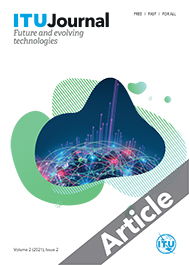|
Seamless communication techniques in mobile cloud computing: A survey
|
Authors: Pagoui Lagabka Constant, Ahyoung Lee, Kun Suo, Donghyun Kim
Status: Final
Date of publication: 31 May 2021
Published in: ITU Journal on Future and Evolving Technologies, Volume 2 (2021), Issue 2, Pages 1-20
Article DOI : https://doi.org/10.52953/XLEJ8917
|
 | Abstract:
Achieving seamless communication and smooth service provision between the cloud and end user's mobile device is one of the main challenges existing in mobile cloud environments. Mobile Cloud Computing (MCC) allows cloud environments to mitigate resource limitation problems for mobile devices. The most popular mobile devices such as smartphones, autonomous vehicles, drones, and other smart electronic equipment are in constant motion and frequently change their point of connection (base station or edge) to mobile computing networks. In these situations of mobility, the data being transmitted, and the services being provided to the device should not be interrupted as the proper function of the device depends on these services. Applications that rely heavily on data and services stored in the cloud environment should be available even when the device has moved from one pole to another. Various existing generic surveys emphasize important solutions to some of the challenges faced in MCC. Different solutions were proposed to achieve seamless communication in MCC, presenting the taxonomy of the interworking and mobility techniques and their possibilities. However, they have not provided a clear evaluation of MCC techniques for achieving seamless communication and service provision, and have not taken into consideration current technological advances such as 5G, femtocell, etc. In this paper, we provide a survey of the different solutions proposed to achieve seamless communication in MCC by taking current technological advances into account. Furthermore, some shortcomings associated with the presented methods are outlined, along with the current issues and research challenges faced in MCC. However, for the purposes of data protection and security, previously proposed schemes already achieve the goal of protecting users' attribute privacy and they have the same access policy; some can even achieve full security, but they are just limited in decryption efficiency. |
|
Keywords: 5G, cloud computing, handover, LTE, mobile cloud computing, mobile cloud environment, mobile networking
Rights: © International Telecommunication Union, available under the CC BY-NC-ND 3.0 IGO license.
|
|
| ITEM DETAIL | ARTICLE | PRICE | |
|---|
ENGLISH  Full article (PDF)
Full article (PDF) |
|
| 0
| Free of charge | DOWNLOAD |
|
|
| |